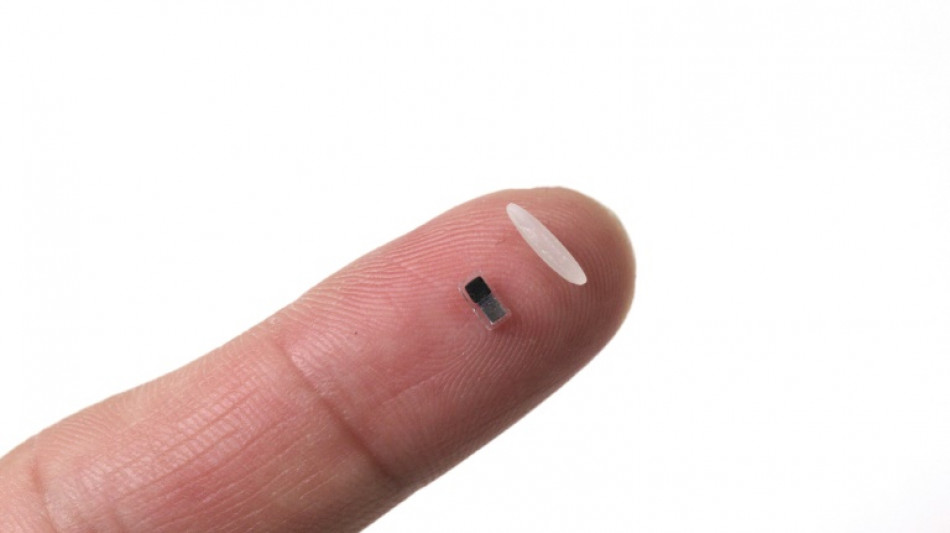
-
 Asian stocks wobble as US shutdown rally loses steam
Asian stocks wobble as US shutdown rally loses steam
-
UK unemployment jumps to 5% before key govt budget

-
 Japanese 'Ran' actor Tatsuya Nakadai dies at 92
Japanese 'Ran' actor Tatsuya Nakadai dies at 92
-
AI stock boom delivers bumper quarter for Japan's SoftBank

-
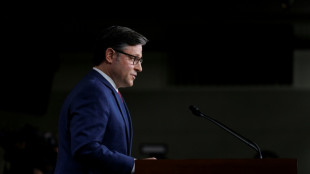 Asian stocks struggle as US shutdown rally loses steam
Asian stocks struggle as US shutdown rally loses steam
-
India probes deadly Delhi blast, vows those responsible will face justice

-
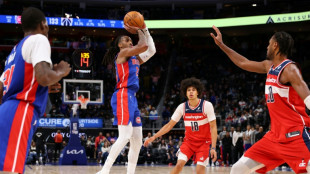 Pistons win streak hits seven on night of NBA thrillers
Pistons win streak hits seven on night of NBA thrillers
-
US state leaders take stage at UN climate summit -- without Trump

-
 Burger King to enter China joint venture, plans to double stores
Burger King to enter China joint venture, plans to double stores
-
Iraqis vote in general election in rare moment of calm

-
 Philippines digs out from Typhoon Fung-wong as death toll climbs to 18
Philippines digs out from Typhoon Fung-wong as death toll climbs to 18
-
'Demon Slayer' helps Sony hike profit forecasts

-
 Who can qualify for 2026 World Cup in next round of European qualifiers
Who can qualify for 2026 World Cup in next round of European qualifiers
-
Ireland's climate battle is being fought in its fields

-
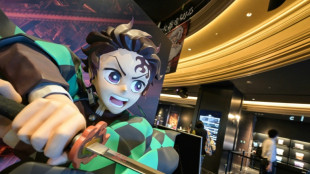 Sony hikes profit forecasts on strong gaming, anime sales
Sony hikes profit forecasts on strong gaming, anime sales
-
End to US government shutdown in sight as stopgap bill advances to House
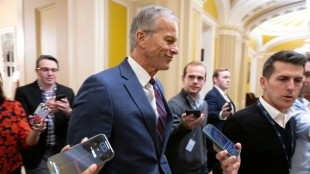
-
 'Western tech dominance fading' at Lisbon's Web Summit
'Western tech dominance fading' at Lisbon's Web Summit
-
Asian stocks rise as record US shutdown nears end

-
 'Joy to beloved motherland': N.Korea football glory fuels propaganda
'Joy to beloved motherland': N.Korea football glory fuels propaganda
-
Taiwan coastguard faces China's might near frontline islands

-
 Concentration of corporate power a 'huge' concern: UN rights chief
Concentration of corporate power a 'huge' concern: UN rights chief
-
Indian forensic teams scour deadly Delhi car explosion

-
 Trump says firebrand ally Greene has 'lost her way' after criticism
Trump says firebrand ally Greene has 'lost her way' after criticism
-
Show shines light on Mormons' unique place in US culture

-
 Ukraine, China's critical mineral dominance, on agenda as G7 meets
Ukraine, China's critical mineral dominance, on agenda as G7 meets
-
AI agents open door to new hacking threats

-
 Syria joins alliance against Islamic State after White House talks
Syria joins alliance against Islamic State after White House talks
-
As COP30 opens, urban Amazon residents swelter

-
 NHL unveils new Zurich office as part of global push
NHL unveils new Zurich office as part of global push
-
Szalay wins Booker Prize for tortured tale of masculinity
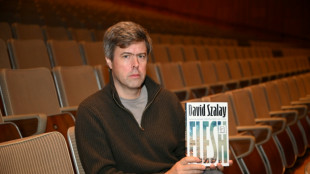
-
 Star Copper Confirms Copper Creek Mineralized Zone
Star Copper Confirms Copper Creek Mineralized Zone
-
Nano One Provides an Update on Recent Corporate Developments & Reports Third Quarter 2025 Results

-
 Tocvan Announces Maiden Drill Program Underway at North Block Gran Pilar Gold-Silver Project
Tocvan Announces Maiden Drill Program Underway at North Block Gran Pilar Gold-Silver Project
-
'Netflix House' marks streaming giant's first theme park

-
 UN warns of rough winter ahead for refugees
UN warns of rough winter ahead for refugees
-
Brazil's 'action agenda' at COP30 takes shape

-
 Trump threatens $1 billion action as BBC apologises for edit error
Trump threatens $1 billion action as BBC apologises for edit error
-
Sinner dominates injury-hit Auger-Aliassime in ATP Finals opener

-
 Trump hails Syria's 'tough' ex-jihadist president after historic talks
Trump hails Syria's 'tough' ex-jihadist president after historic talks
-
Syria's ex-jihadist president meets Trump for historic talks

-
 Top US court hears case of Rastafarian whose hair was cut in prison
Top US court hears case of Rastafarian whose hair was cut in prison
-
US mediator Kushner and Netanyahu discuss phase two of Gaza truce

-
 End to US government shutdown in sight as Democrats quarrel
End to US government shutdown in sight as Democrats quarrel
-
Trump threatens air traffic controllers over shutdown absences

-
 US to remove warnings from menopause hormone therapy
US to remove warnings from menopause hormone therapy
-
UK water firm says 'highly likely' behind plastic pellet pollution incident

-
 Syria's ex-jihadist president holds historic Trump talks
Syria's ex-jihadist president holds historic Trump talks
-
End to record-long US government shutdown in sight

-
 France's ex-leader Sarkozy says after jail release 'truth will prevail'
France's ex-leader Sarkozy says after jail release 'truth will prevail'
-
Atalanta sack coach Juric after poor start to season


World's tiniest pacemaker is smaller than grain of rice
Scientists said Wednesday they have developed the world's tiniest pacemaker, a temporary heartbeat regulator smaller than a grain of rice that can be injected and controlled by light before dissolving.
While still years away from being tested in humans, the wireless pacemaker was hailed as a "transformative breakthrough" that could spur advances in other areas of medicine.
Millions of people across the world have permanent pacemakers, which stimulate hearts with electrical pulses to ensure they beat normally.
The US-led team of researchers behind the new device said they were motivated to help the one percent of children born with congenital heart defects who need a temporary pacemaker in the week after surgery.
The pacemaker could also help adults restore a normal heartbeat as they recover from heart surgery.
Currently, temporary pacemakers require surgery to sew electrodes onto heart muscles, with wires connecting to a powered device on the patient's chest.
When the pacemaker is no longer needed, doctors or nurses pull out the wires, which can sometimes cause damage.
Neil Armstrong, the first person to walk on the Moon, died from internal bleeding after his temporary pacemaker was removed in 2012.
But the newly developed pacemaker is wireless. And at just one millimetre thick and 3.5 millimetres long, it can fit into the tip of a syringe.
It has also been designed to dissolve into the body when no longer needed, sparing patients invasive surgery.
- 'Significant leap forward' -
The pacemaker is paired to a soft patch worn on the patient's chest, according to a study describing the device in the journal Nature.
When the patch detects irregular heartbeats, it automatically flashes light that tells the pacemaker what heartbeat it should stimulate.
The pacemaker is powered by what is called a galvanic cell, which uses the body's fluids to convert chemical energy into electrical pulses that stimulate the heart.
So far, the pacemaker has worked effectively in tests on mice, rats, pigs, dogs and human heart tissue in the lab, according to the study.
Senior study author John Rogers of Northwestern University in the United States told AFP he estimated the pacemaker could be tested in humans in two to three years.
His lab has launched a start-up to pursue this goal, he added.
In the future, the underlying technology could also "create unique and powerful strategies to address societal challenges in human health," Rogers said.
Bozhi Tian, whose lab at the University of Chicago has also developed light-activated pacemakers but was not involved in the latest research, called it a "significant leap forward".
"This new pacemaker is a transformative breakthrough in medical technology," he told AFP.
"It's a paradigm shift in temporary pacing and bioelectronic medicine, opening up possibilities far beyond cardiology -- including nerve regeneration, wound healing and integrated smart implants."
Heart disease is the world's leading cause of death, according to the World Health Organization.
L.Harper--AMWN

